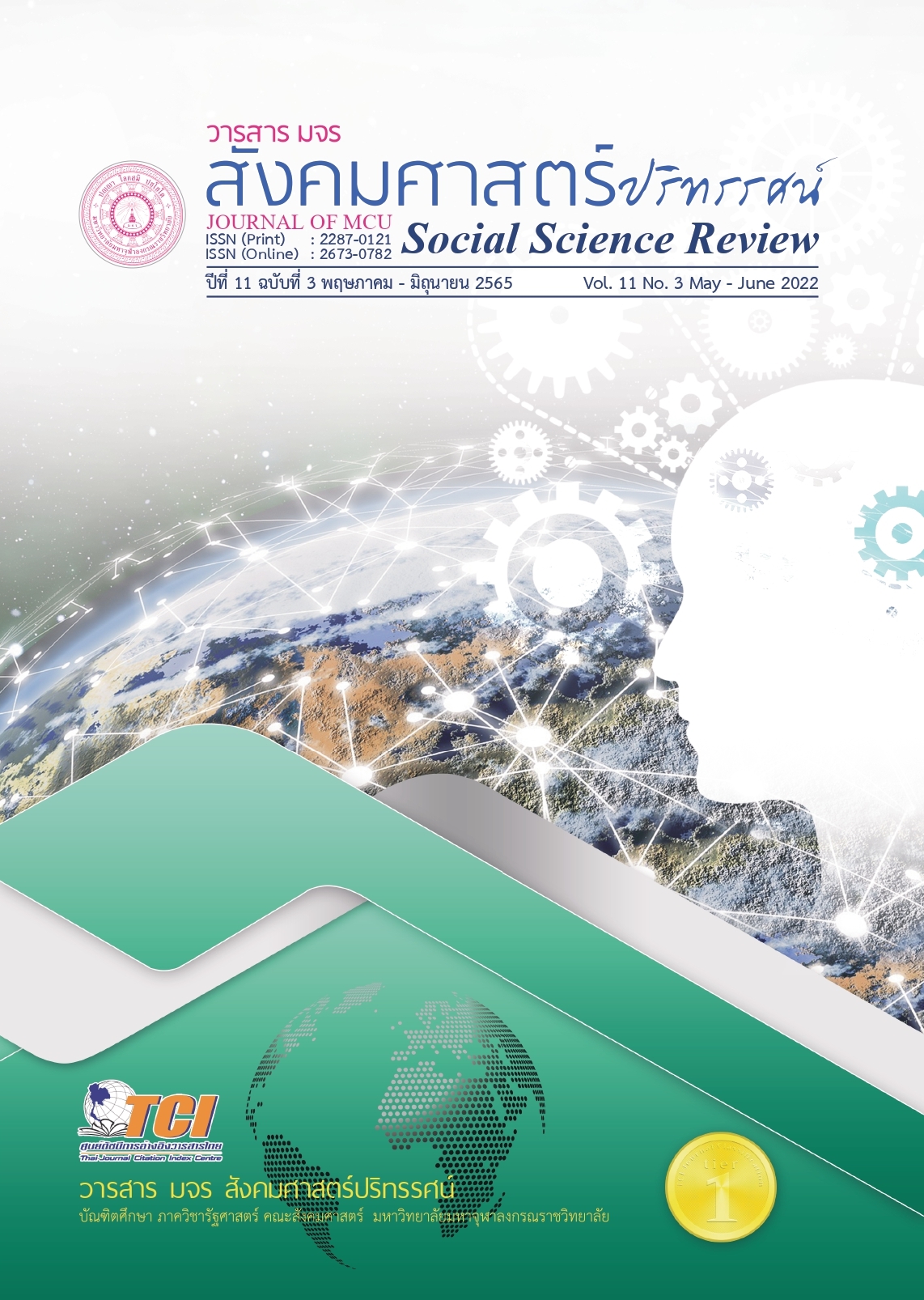การศึกษาพื้นที่สาธารณะที่มีนัยสำคัญในพื้นที่พาณิชยกรรมดั้งเดิมของชุมชนริมน้ำบริเวณลุ่มน้ำแม่กลอง พื้นที่ศึกษาจังหวัดราชบุรีและจังหวัดสมุทรสงคราม
คำสำคัญ:
ตลาดน้ำ, พื้นที่สาธารณะ, ชุมชนริมน้ำบทคัดย่อ
บทความวิจัยนี้มีวัตถุประสงค์เพื่อศึกษาลักษณะของพื้นที่ วิเคราะห์พื้นที่สาธารณะที่มีนัยสำคัญต่อตลาดน้ำ รูปแบบการใช้พื้นที่สาธารณะ ความคาดหวังต่อการเปลี่ยนแปลงในอนาคต ตลอดจนเสนอแนวทางการพัฒนาและปรับปรุงพื้นที่สาธารณะ งานวิจัยนี้ใช้วิธีบูรณาการเชิงคุณภาพและเชิงสำรวจโดยเนื้อหาแบ่งออกเป็น 2 ส่วนคือ การเก็บข้อมูลและสัมภาษณ์ผู้ใช้งานบริเวณ 6 ตลาดน้ำสำคัญ ได้แก่ ตลาดน้ำบางน้อย ตลาดน้ำบางนกแขวก ตลาดน้ำอัมพวา ตลาดน้ำท่าคา ตลาดร่มบวร และตลาดน้ำดำเนินสะดวก และการศึกษาพื้นที่เชิงลึกของตลาดน้ำซบเซาโดยการเก็บข้อมูลและสัมภาษณ์แบบกลุ่มบริเวณตลาดน้ำสามอำเภอ
ผลการวิจัยพบว่า พื้นที่การค้าดั้งเดิมดำเนินการอยู่และตลาดน้ำที่ซบเซาถูกเปลี่ยนบทบาทเพื่อส่งเสริมการท่องเที่ยว พื้นที่สาธารณะที่มีนัยสำคัญต่อตลาดน้ำดั้งเดิมประกอบด้วย ศาสนสถานและแหล่งพาณิชยกรรมใหม่ที่เชื่อมโยงกับพื้นที่ตลาดน้ำเดิมซึ่งช่วยส่งเสริมเศรษฐกิจชุมชน พื้นที่สาธารณะที่มีนัยสำคัญต่อตลาดน้ำดั้งเดิมที่ได้รับการฟื้นฟูและตลาดน้ำประยุกต์ประกอบด้วย พื้นที่ทางเดินริมน้ำ พื้นที่ท้องน้ำ และพื้นที่ลานอเนกประสงค์เพื่อกิจกรรมการค้า ผู้ใช้งานคาดหวังการพัฒนาพื้นที่สาธารณะที่คำนึงถึงบทบาทและอัตลักษณ์ของแต่ละพื้นที่ แนวทางสำคัญในการพัฒนาและปรับปรุงพื้นที่สาธารณะของตลาดน้ำประกอบด้วย การปรับปรุงลักษณะทางกายภาพและสภาพแวดล้อม การบริหารจัดการกิจกรรม และการบริหารจัดการพื้นที่และบริการสาธารณะที่เน้นส่งเสริมการท่องเที่ยวเศรษฐกิจชุมชนและวัฒนธรรม
เอกสารอ้างอิง
กฤตพร ห้าวเจริญ. (2555). กระบวนการเกิดและการเปลี่ยนแปลงของตลาดชุมชนริมน้ำบริเวณลุ่มน้ำท่าจีน. กรุงเทพฯ: จุฬาลงกรณ์มหาวิทยาลัย.
กุลธิดา สุริยะวรรณากูล. (2557). แนวทางการบริหารจัดการพื้นที่สาธารณะของตลาดน้ำอัมพวา. ปทุมธานี: คณะสถาปัตยกรรมศาสตร์และการผังเมือง มหาวิทยาลัยธรรมศาสตร์.
ชนิธิกาญจน์ จีนใจตรง, และ กฤตพร ห้าวเจริญ. (2563). ภูมิทัศน์วัฒนธรรมของชุมชนดั้งเดิมจังหวัดสมุทรสงคราม. วารสารวิชาการคณะสถาปัตยกรรมศาสตร์ สจล., 31(2), 17-33.
ไทยโพสต์. (2561). ชวนเที่ยวนอกกรอบ ปลุกกระแสเมืองรองไฮซีซัน. สืบค้น 13 พฤศจิกายน 2564, จาก https://www.thaipost.net/main/detail/23237
พรชัย ปานรัตน์. (2564, สิงหาคม). ตัวแทนผู้ค้าชุมชนวัดเพลง [บทสัมภาษณ์].
สุธาสินี สารประสิทธิ์. (2559). ลักษณะพื้นที่กึ่งสาธารณะและพื้นที่สาธารณะที่แสดงถึงอัตลักษณ์ชุมชนอัมพวา จังหวัดสมุทรสงคราม. กรุงเทพฯ: ภาควิชาการออกแบบและวางผังชุมชนเมือง มหาวิทยาลัยศิลปากร.
อรุณวรรณ ศิริวชิราภรณ์. (2550). ปัจจัยที่มีผลต่อการดำรงอยู่ของการตั้งถิ่นฐานดั้งเดิมของชุมชนคลองวัดประดู่. กรุงเทพฯ: จุฬาลงกรณ์มหาวิทยาลัย.
Jan Gehl. (2013). How to study public life. Chichester, Washinton, DC: Island Press.
Matthew Carmona, at el. (2003). Public Places Urban Spaces. Oxford: Architectural Press
ดาวน์โหลด
เผยแพร่แล้ว
รูปแบบการอ้างอิง
ฉบับ
ประเภทบทความ
สัญญาอนุญาต
ลิขสิทธิ์ (c) 2022 วารสาร มจร สังคมศาสตร์ปริทรรศน์

อนุญาตภายใต้เงื่อนไข Creative Commons Attribution-NonCommercial-NoDerivatives 4.0 International License.
เพื่อให้เป็นไปตามกฎหมายลิขสิทธิ์ ผู้นิพนธ์ทุกท่านต้องลงลายมือชื่อในแบบฟอร์มใบมอบลิขสิทธิ์บทความให้แก่วารสารฯ พร้อมกับบทความต้นฉบับที่ได้แก้ไขครั้งสุดท้าย นอกจากนี้ ผู้นิพนธ์ทุกท่านต้องยืนยันว่าบทความต้นฉบับที่ส่งมาตีพิมพ์นั้น ได้ส่งมาตีพิมพ์เฉพาะในวารสาร มจร สังคมศาสตร์ปริทรรศน์ เพียงแห่งเดียวเท่านั้น หากมีการใช้ภาพหรือตารางหรือเนื้อหาอื่นๆ ของผู้นิพนธ์อื่นที่ปรากฏในสิ่งตีพิมพ์อื่นมาแล้ว ผู้นิพนธ์ต้องขออนุญาตเจ้าของลิขสิทธิ์ก่อน พร้อมทั้งแสดงหนังสือที่ได้รับการยินยอมต่อบรรณาธิการ ก่อนที่บทความจะได้รับการตีพิมพ์ หากไม่เป็นไปตามข้อกำหนดเบื้องต้น ทางวารสารจะถอดบทความของท่านออกโดยไม่มีข้อยกเว้นใดๆ ทั้งสิ้น





